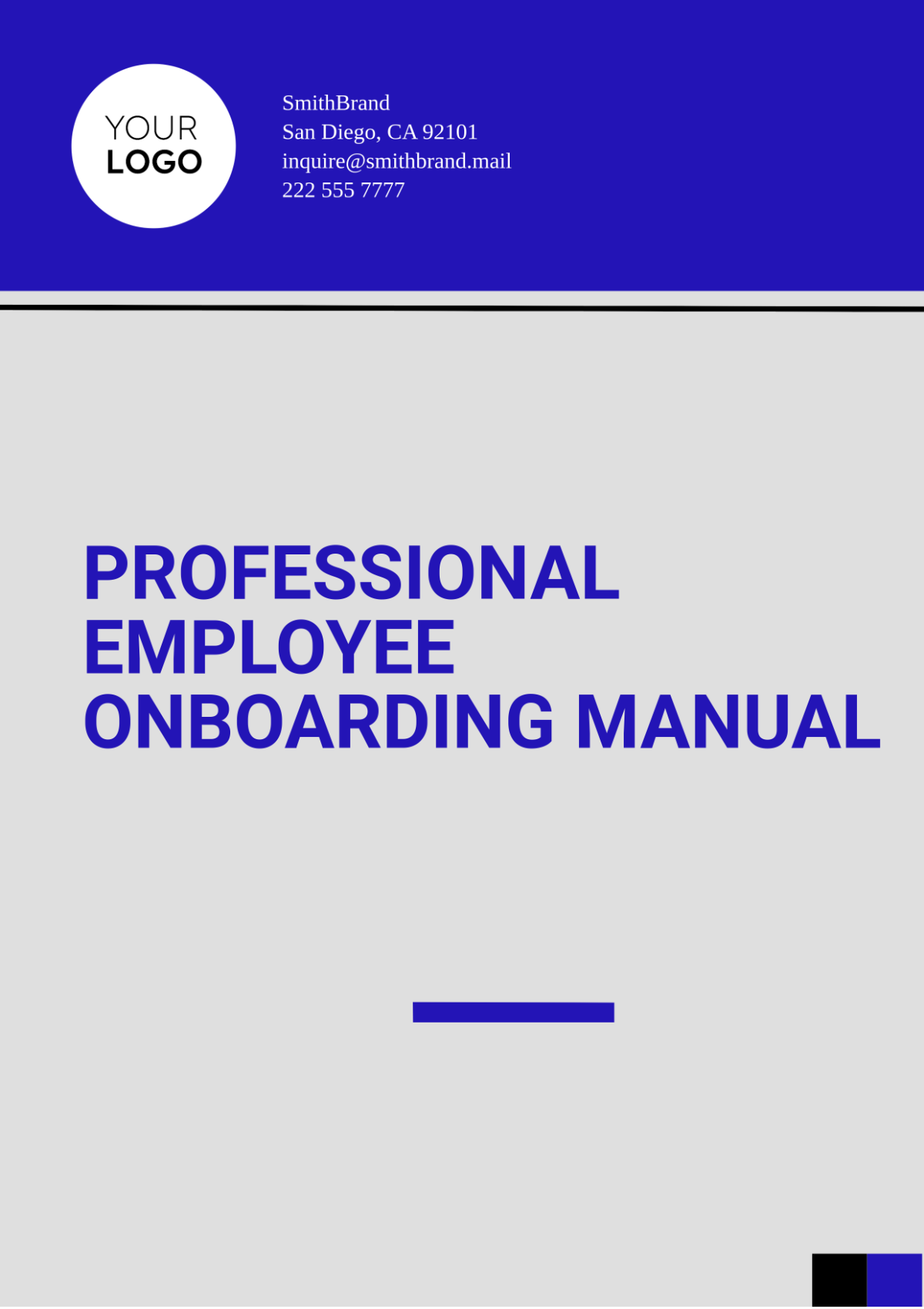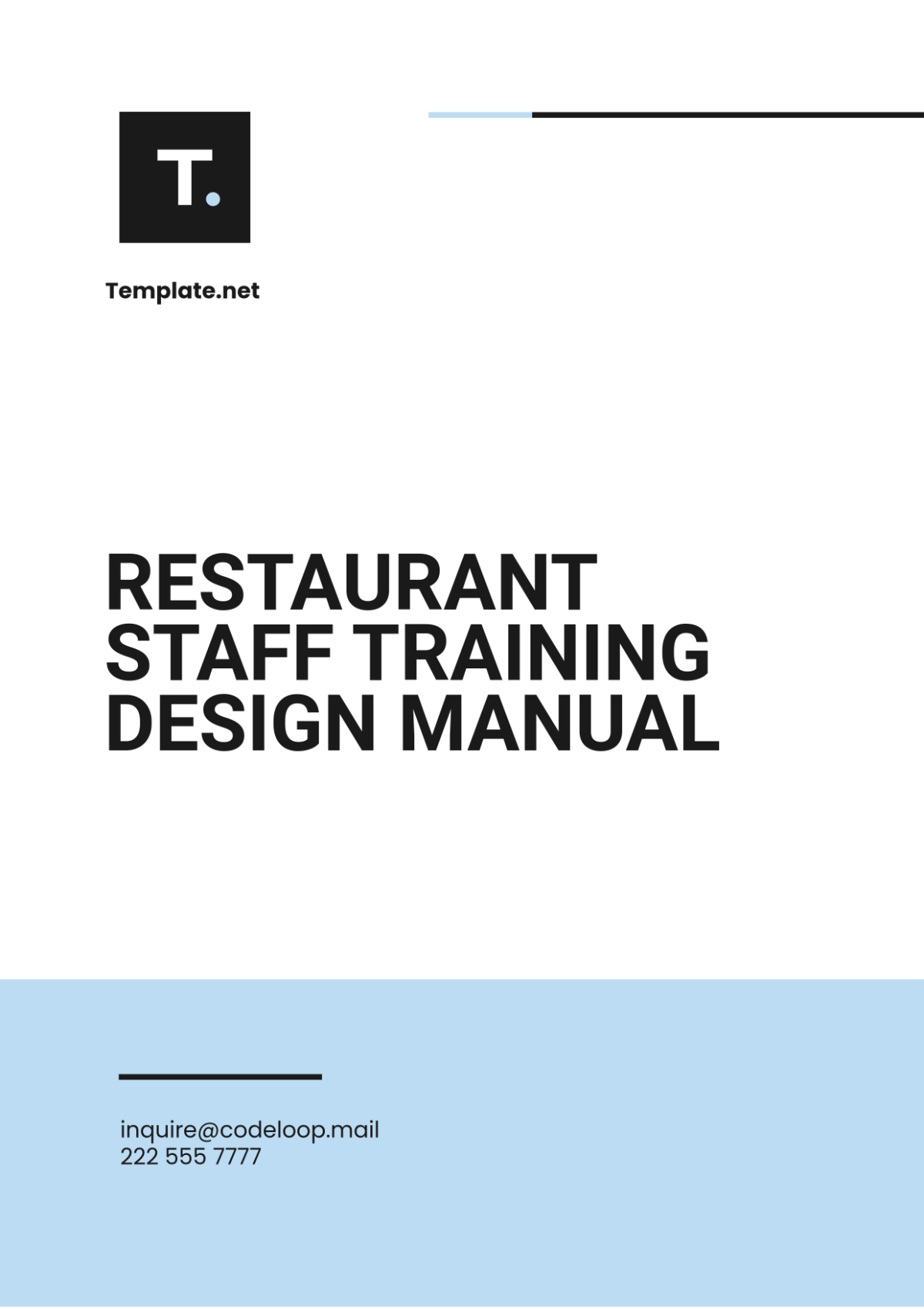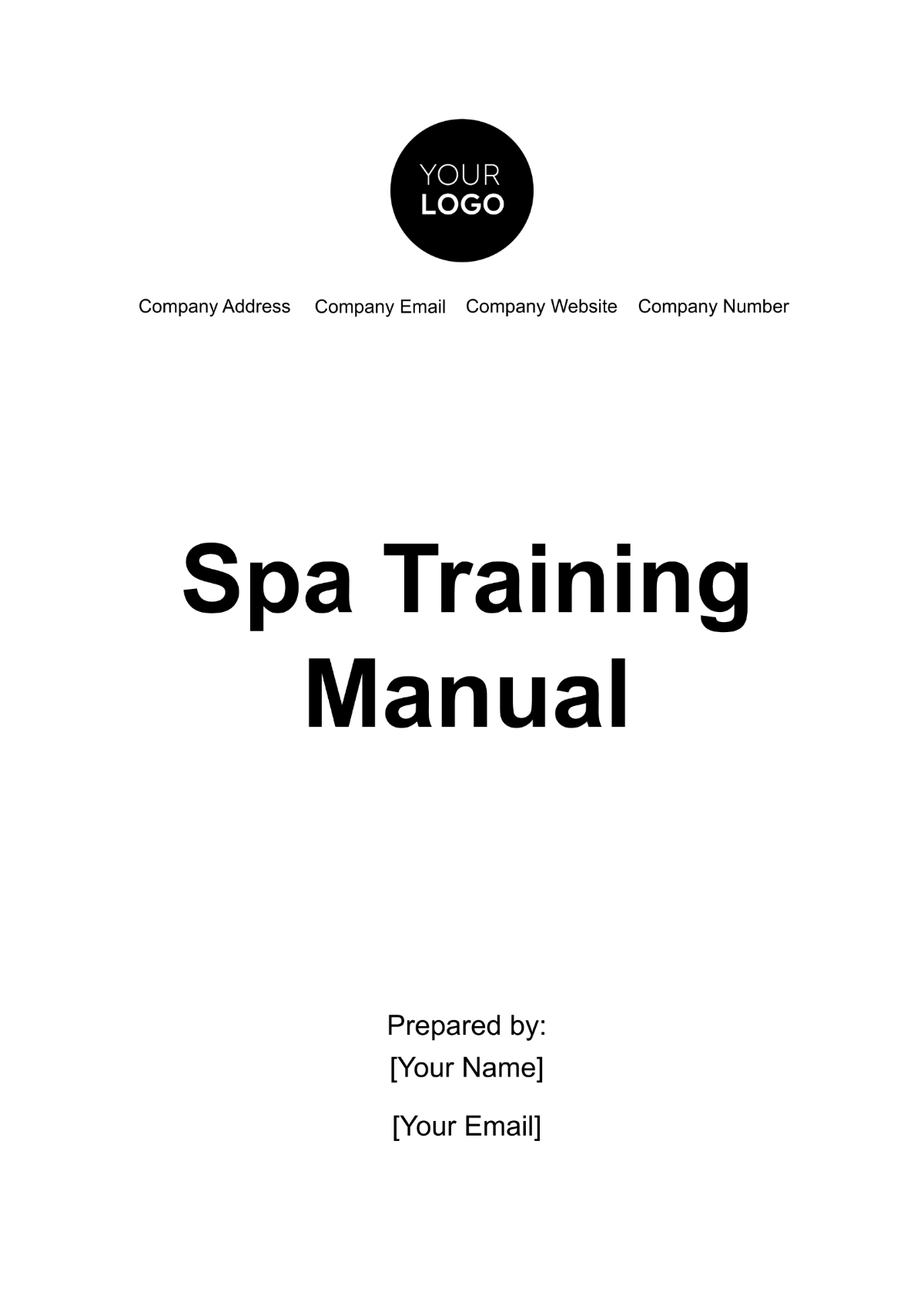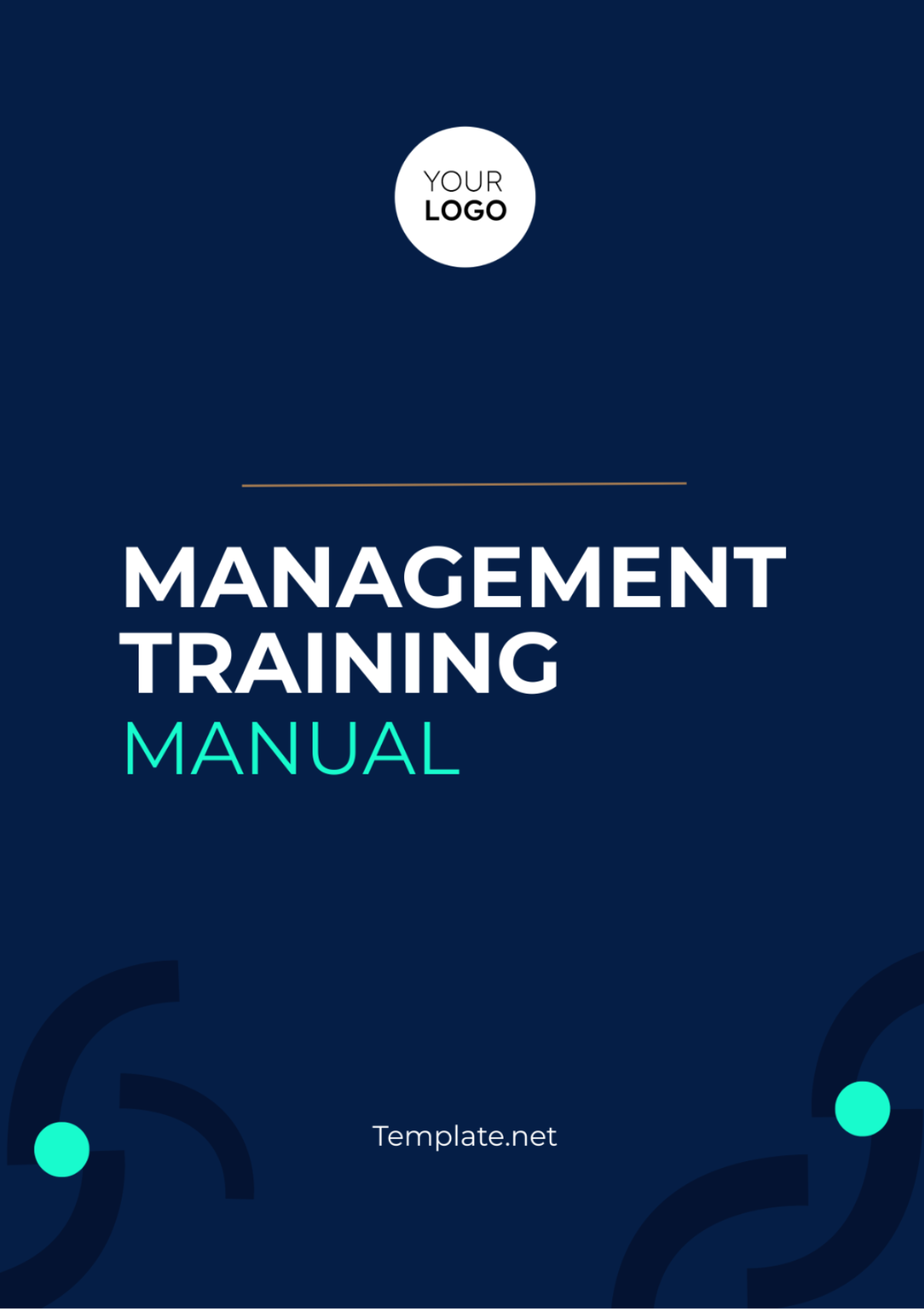Free Manual on Employee Training and Upgradation HR Template
Manual on Employee Training and Upgradation
Table of Contents
A. Introduction.................................................................................................................3
B. Organizational Commitment to Training...................................................................3
C. Identifying Training Needs........................................................................................4
D. Setting Training Objectives.......................................................................................6
E. Role of Trainers or Facilitators..................................................................................9
F. Assessment Methods...............................................................................................10
G. Leadership Development.........................................................................................11
H. Training Budget Allocation......................................................................................13
I. Training Records Maintenance.................................................................................14
J. Safety Training and OSHA Compliance...................................................................15
A. Introduction
Welcome to our commitment to employee growth and excellence. Contact us at [Your Company Email Address], [Your Company Address], [Your Company Number], or visit [Your Company Website]. This manual, prepared by [Your Name], is your comprehensive resource for training and development opportunities within [Your Company Name]. We believe in empowering our workforce through continuous learning, skill enhancement, and equal opportunity for all.
B. Organizational Commitment to Training
At [Your Company Name], we are dedicated to fostering a culture of continuous learning and growth. We firmly believe that investing in our employees' development is not just a responsibility but a strategic imperative.
Types of Training Offered
We offer a diverse range of training programs designed to meet the varying needs of our employees. These programs include:
● On-the-Job Training
● Online Courses
● Workshops and Seminars
● Leadership Development Programs
Employee Participation Expectations
We expect all employees to actively engage in training opportunities that enhance their skills and contribute to their job performance.
Equal Opportunity and Anti-Discrimination Policies
At [Your Company Name], we are committed to providing equal opportunities for all employees, irrespective of race, color, religion, sex, national origin, age, or disability status. Discrimination of any kind will not be tolerated, and all training programs are accessible to every employee on an equal basis.
Training Needs Assessment
Identifying and addressing training needs is a collaborative effort at [Your Company Name]. We employ several methods to ensure that training programs are tailored to individual and organizational requirements:
● Skills Gap Analysis
● Performance Evaluations
● Employee Feedback Mechanisms
C. Identifying Training Needs
Skills Gap Analysis
To ensure that our employees receive relevant and effective training, we conduct regular skills gap analyses at [Your Company Name]. This process involves a systematic review of current employee skills and the skills required to excel in their roles. Here's how it works:
Data Collection 🠛 Skills Assessment 🠛 Skill Prioritization 🠛 Training Needs Identification 🠛 Performance Evaluations |
We believe that performance evaluations play a pivotal role in identifying areas where employees can benefit from additional training or upgradation. Here's how we incorporate performance evaluations into our training needs assessment process:
● Regular Reviews
● Skill Assessment
● Goal Alignment
● Individual Development Plans
Employee Feedback Mechanisms
To ensure that we remain responsive to the needs employees’ and preferences, we have established robust feedback mechanisms:
● Open Communication Channels
● Feedback Surveys
● Regular Check-Ins
● Anonymous Reporting
Training Planning
At [Your Company Name], we take a structured approach to ensure that training programs align with our organizational objectives and meet the unique needs of our employees. Here's how we do it:
Setting Training Objectives Each training program begins with clear, well-defined objectives. These objectives specify the knowledge, skills, or behaviors that participants are expected to acquire or enhance.
Training Program Design We employ various instructional methods and materials, ensuring that learning experiences are dynamic and impactful.
Selection of Training Methods We offer a variety of training methods to cater to diverse learning styles. Options include workshops, e-learning modules, on-the-job training, coaching, and mentoring.
Training Schedule and Calendar Our training calendar provides a structured overview of upcoming training programs, allowing employees to plan their participation and ensuring that training remains accessible and convenient.
Budget Allocation We allocate resources prudently to ensure that training programs are adequately funded and accessible to all employees, regardless of their role or department.
|
D. Setting Training Objectives
Training Program Design
Setting precise training objectives ensures that our training programs are purposeful and aligned with both individual growth and organizational goals.
Training Objectives
● Clarity and Specificity
● Alignment with Organizational Goals
● Individualized Focus
● Skill Enhancement
● Assessment Criteria
Training Program Design
Our training program design approach at [Your Company Name] is rooted in adult learning principles, ensuring that learning experiences are engaging, effective, and learner-centered.
Key Elements of Our Training Program Design
● Needs Analysis ● Curriculum Development ● Instructional Materials | ● Experiential Learning ● Assessment and Feedback ● Continuous Improvement |
Selection of Training Methods
At [Your Company Name], we understand that one size does not fit all when it comes to training methods. We offer a diverse range of training approaches to cater to different learning styles and preferences.
Training Methods Overview
● On-the-Job Training
● Online Courses
● Workshops and Seminars
● Coaching and Mentoring
● E-Learning Modules
● Hands-On Training
Training Schedule and Calendar
Our training schedule and calendar provide employees with a structured overview of upcoming training programs, allowing them to plan their participation and ensure that training remains accessible and convenient.
Key Features of Our Training Schedule
● Advance Notice
● Accessibility
● Online Booking
● Program Duration
● Location
● Reminders
Budget Allocation
At [Your Company Name], we recognize the importance of allocating resources prudently to ensure that training programs are adequately funded and accessible to all employees, regardless of their role or department.
Key Aspects of Budget Allocation
● Dedicated Training Budget
● Equity and Fairness
● Resource Optimization
● Vendor Partnerships
● Return on Investment (ROI)
Sample Budget Allocation for Training and Development
Year: 2053
Training Program Categories
Category | Allocated Budget ($) |
On-the-Job Training | $15,000 |
Online Courses | $10,000 |
Workshops and Seminars | $20,000 |
Leadership Development | $12,000 |
E-Learning Modules | $8,000 |
Coaching and Mentoring | $7,000 |
Hands-On Training | $10,000 |
Other | $5,000 |
Total Training Budget | $77,000 |
Training Delivery
Efficient training delivery is essential to ensure that employees receive the knowledge and skills they need to excel in their roles. At [Your Company Name], we prioritize effective and engaging training methods to facilitate learning.
E. Role of Trainers or Facilitators
Trainers guide participants through the training content, facilitate discussions, provide clarifications, and create a positive and inclusive learning environment.
Training Facilities and Equipment
Our state-of-the-art training facilities are equipped to provide a comfortable and conducive learning environment. These spaces are carefully selected and maintained to optimize the learning experience. Additionally, we ensure that the necessary training equipment and resources, such as audiovisual aids, computers, and training materials, are readily available to support effective training delivery.
● Training Room
● Computer Lab
● Conference Room
● Safety Training Center
● Sales Training Center
● Outdoor Venue
Training Materials and Resources
These materials are thoughtfully curated to align with the training objectives, making it easier for participants to grasp and retain key information.
● Training Manuals
● Presentation Slides
● Handouts
● Workbooks
● Videos and Multimedia
Technology-Based Training
Our e-learning platform provides access to training modules and resources from any location, allowing employees to learn at their own pace. This approach fosters a culture of continuous learning and accommodates diverse learning styles.
Training Evaluation and Feedback
Regular evaluations ensure that our training programs remain relevant, engaging, and aligned with the evolving needs of our employees and the organization.
F. Assessment Methods
Feedback Surveys
Our feedback surveys are a vital component of our training evaluation process. After each training session, participants are encouraged to provide feedback on the content, delivery, and overall experience. This input helps us gauge the effectiveness of the training and make necessary improvements.
Post-Training Assessments
To measure the retention and application of knowledge, we conduct post-training assessments. These assessments, which may include quizzes, tests, or practical exercises, enable us to assess participants' understanding and identify areas for reinforcement or further training.
Key Performance Indicators (KPIs)
Aligning training outcomes with organizational objectives, we track Key Performance Indicators (KPIs). These performance metrics help us quantify the impact of training on employee performance, productivity, and other critical areas, ensuring that training aligns with organizational goals.
Here is a list of common Key Performance Indicators (KPIs) that organizations often use to measure the impact of training and development programs:
Employee Performance Metrics
● Productivity levels
● Quality of work
● Efficiency and effectiveness
● Error rates and rework
Learning Metrics
● Skill acquisition
● Knowledge retention
● Training completion rates
● Training engagement
Employee Satisfaction and Engagement
● Job satisfaction levels
● Employee engagement scores
● Retention rates
● Employee feedback and surveys
Continuous Improvement Process
Our commitment to excellence includes an ongoing process of improvement. We regularly review training programs based on feedback, assessment results, and changing business needs. This iterative approach ensures that our training remains relevant and effective.
Employee Development Programs
In addition to specific training sessions, we offer comprehensive employee development programs. These programs encompass a range of learning opportunities, including mentoring, coaching, and career advancement pathways, fostering continuous growth and skill development among our workforce.
G. Leadership Development
Leadership development at [Your Company Name] focuses on cultivating effective leaders who inspire, motivate, and guide teams toward success. Our programs emphasize essential leadership competencies, communication skills, and strategic thinking to equip individuals for leadership roles.
Career Progression
We are committed to fostering career growth and advancement for our employees. Our structured career progression pathways provide clarity on skill development and experience requirements for promotions and upward mobility.
Succession Planning
To ensure a seamless transition of leadership roles, we maintain a robust succession planning process. This involves identifying and grooming high-potential employees to step into key positions when needed, safeguarding organizational continuity.
Cross-Training Initiatives
Cross-training initiatives are integral to our workforce development strategy. They promote versatility among employees by providing opportunities to gain skills and knowledge beyond their primary roles, enhancing flexibility and adaptability.
Mentorship and Coaching Programs
Our mentorship and coaching programs pair experienced employees with mentees seeking guidance and support. These initiatives foster knowledge transfer, skill enhancement, and personal growth, creating a culture of mentorship and learning.
Resources and Support
We provide a wealth of resources and support for employees' career development journey. From learning materials and workshops to counseling and professional development funds, we empower individuals to pursue their career aspirations.
|
H. Training Budget Allocation
Our commitment to employee development is reflected in our substantial training budget allocation. We prioritize investment in high-quality training programs, ensuring that resources are allocated strategically to enhance skills and competencies across the organization.
Access to Training Materials
Easy access to comprehensive training materials is fundamental to our training philosophy. We provide employees with a centralized repository of resources, including manuals, e-learning modules, and reference materials, enabling self-directed learning and skill enhancement.
Access to Training Facilities
Our state-of-the-art training facilities are easily accessible to all employees. We understand the importance of providing a conducive environment for learning and skill development, ensuring that our facilities are well-equipped and readily available.
On-The-Job Training Opportunities
On-the-job training is an integral part of our employee development strategy. We offer opportunities for hands-on learning, allowing employees to apply newly acquired skills and knowledge directly to their roles, enhancing practical proficiency.
Employee Assistance Programs (EAPs)
We recognize that personal and professional challenges may impact performance. Our Employee Assistance Programs (EAPs) provide valuable support, including counseling services and resources, to help employees overcome obstacles and maintain overall well-being.
Here's a list of examples of Employee Assistance Programs (EAPs):
● Counseling Services ● Mental Health Support ● Legal Consultation ● Financial Counseling ● Substance Abuse Treatment | ● Stress Management Workshops ● Work-Life Balance Programs ● Child Care Assistance ● Elder Care Support ● Health and Wellness Programs |
Record Keeping and Documentation
Maintaining accurate records and documentation of training activities is a cornerstone of our training framework. We adhere to meticulous record-keeping practices, ensuring that training histories and certifications are accessible for compliance and performance tracking purposes.
I. Training Records Maintenance
Our rigorous system ensures that all training activities, including attendance, assessments, and outcomes, are meticulously documented and securely stored. This commitment to records maintenance enhances transparency, accountability, and the ability to assess the impact of training programs.
Documenting Employee Participation
We maintain a comprehensive record of participation, capturing details such as the courses attended, dates, and the trainers involved. This documentation allows us to tailor future training to individual and collective needs.
Certificates and Qualifications
Upon successful completion of training, employees receive certificates and qualifications that validate their newly acquired skills and knowledge. These credentials hold value not only within the organization but also externally, serving as a testament to employees' professional growth.
Training History and Progress Reports
Our training history and progress reports provide insights into individual and group performance. These reports showcase the training milestones achieved, skills gained, and areas where further development is required. This information guides future training planning and ensures continuous improvement.
Compliance and Legal Considerations
We are committed to upholding all compliance and legal considerations related to training records. Adhering to industry-specific regulations and standards, we maintain records in accordance with data privacy laws and maintain the confidentiality and security of employee training data.
Here's a list of common certificates and qualifications that employees may receive after completing various training and development programs:
Certificate of Completion | Awarded for successfully finishing a training program. |
Professional Certifications | Industry-specific certifications demonstrating expertise (e.g., PMP, CPA, Six Sigma). |
First Aid and CPR Certification | Essential for workplace safety and emergency response. |
Technical Proficiency Certificates | Confirming proficiency in specific software, tools, or technologies. |
Leadership and Management Certificates | Recognizing leadership development achievements. |
J. Safety Training and OSHA Compliance
Safety is our utmost priority at [Your Company Name]. Our safety training programs ensure that employees are well-versed in safety protocols, emergency response procedures, and hazard identification. We remain fully compliant with Occupational Safety and Health Administration (OSHA) regulations, striving for a safe and secure workplace.
Diversity and Inclusion Training
Our training initiatives foster an inclusive environment where employees gain awareness, knowledge, and skills to embrace diversity, combat bias, and promote equitable practices. We are committed to nurturing a diverse workforce that thrives on inclusion and respect.
Compliance with Labor Laws (e.g., FLSA)
We uphold strict compliance with labor laws, including the Fair Labor Standards Act (FLSA). This ensures fair wages, overtime regulations, and workplace conditions for our employees. Our commitment to legal compliance creates a fair and just work environment.
Non-Discrimination and Equal Opportunity Policies
Non-discrimination and equal opportunity are embedded in our organizational culture. Our policies prohibit discrimination based on race, gender, religion, age, disability, and other protected categories. We champion equal opportunities for all employees and remain vigilant in preventing discrimination.
Protection of Employee Privacy
Protecting employee privacy is paramount. We adhere to strict privacy policies and safeguards to ensure that employees' personal information and data are handled confidentially and securely. This commitment fosters trust and confidence among our workforce.

















































